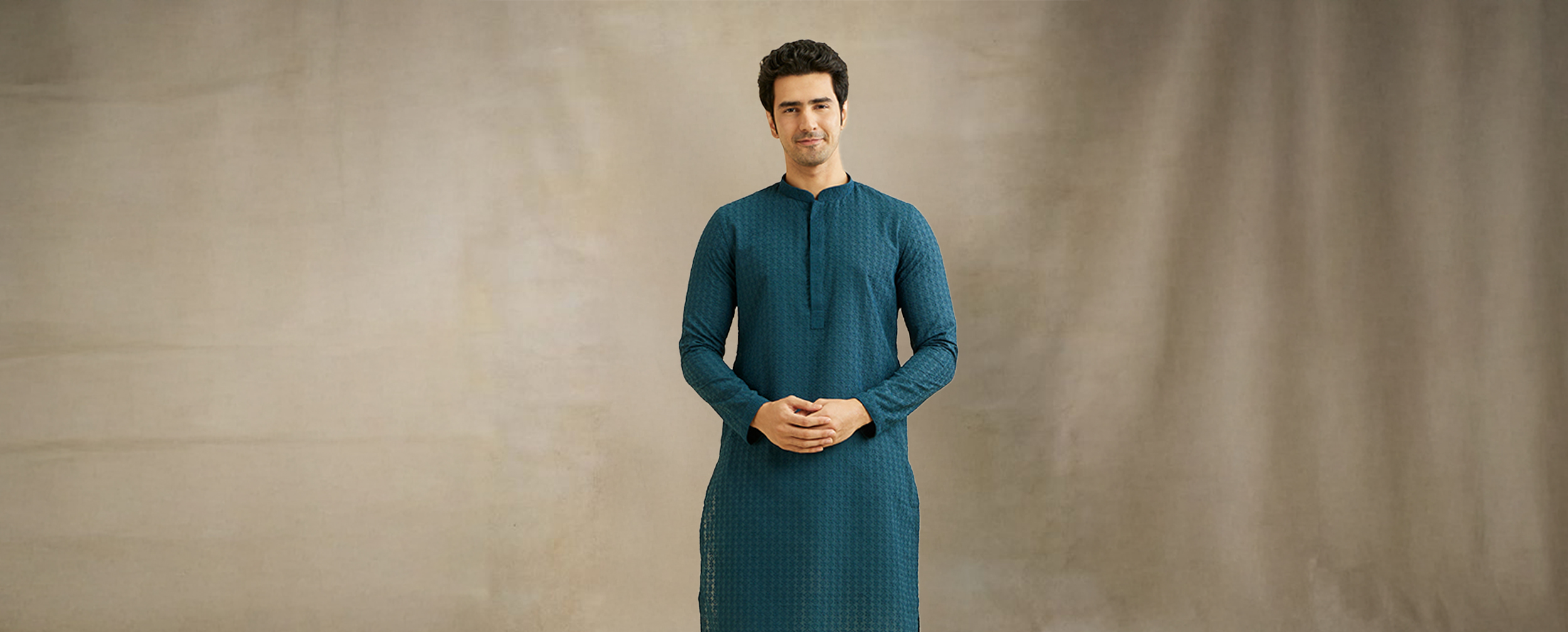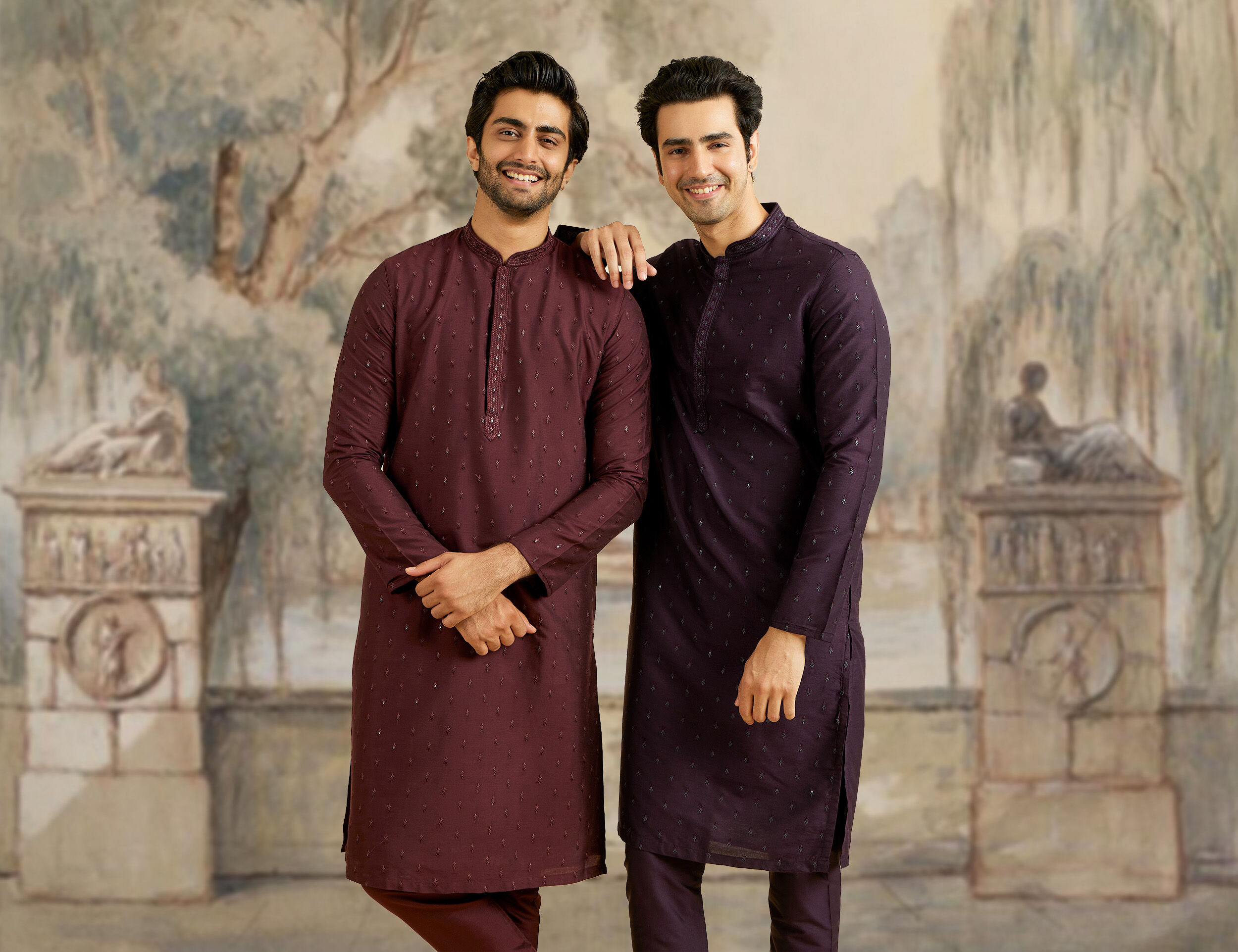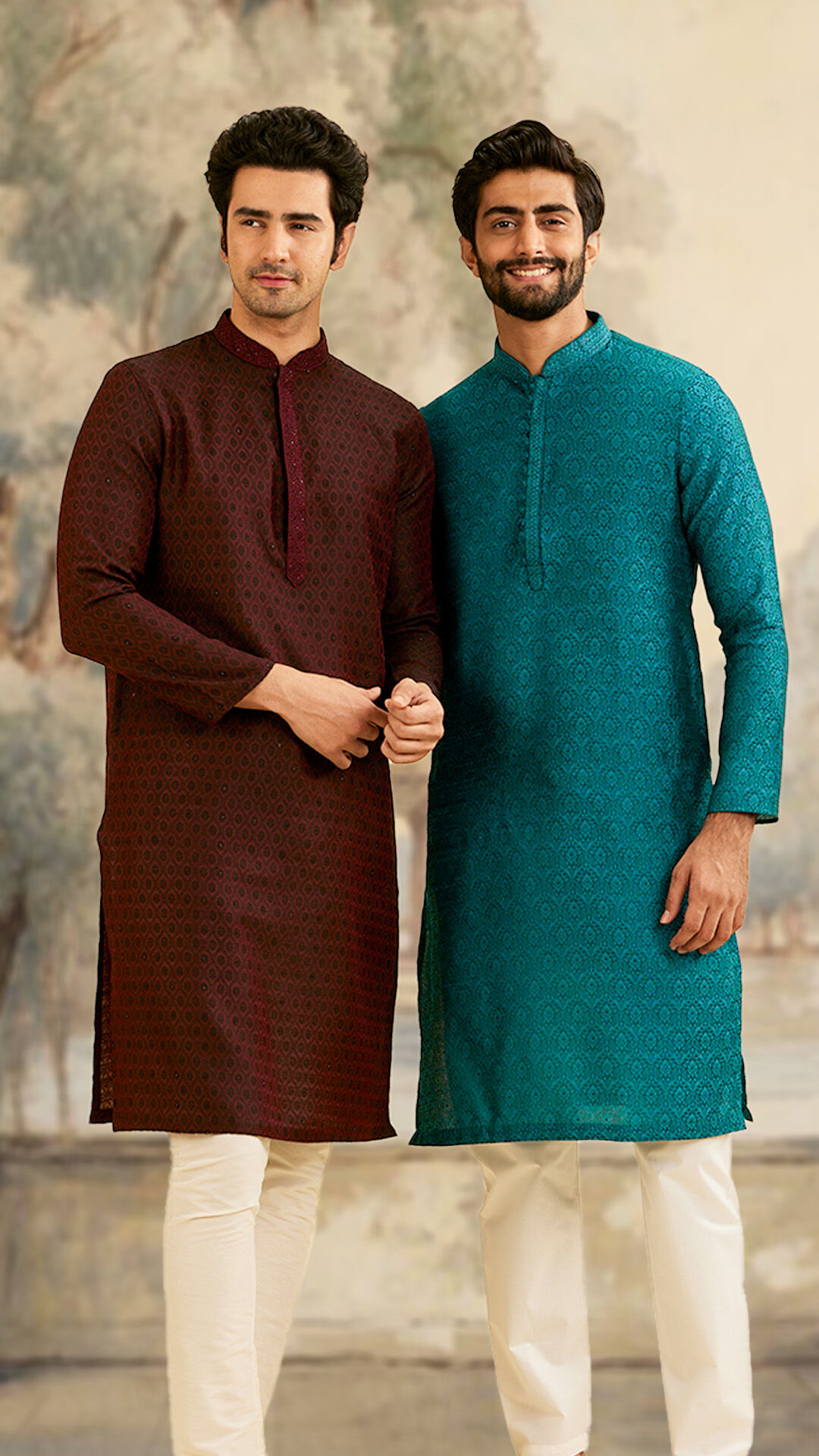STORIES BY MANYAVAR & MOHEY

Lifestyle
Embroidery Magic: Ancient Indian Techniques & Their Modern Avatars
Date 15 March 2025 Reading time: 7-10 mins
From Lucknow's chikankari to Punjab's phulkari, India is home to a breathtaking array of age-old embroidery techniques that lend grace, elegance, and unmatched charm to traditional wear. Each region's unique stitches, patterns, and motifs weave captivating stories on fabric, making these embroidered ensembles true works of art.
Whether you're a soon-to-be groom searching for the perfect sherwani, a fashion-savvy wedding guest, or simply an admirer of fine craftsmanship, join us as we explore the fascinating world of India's traditional embroidery. Discover what makes these ancient needlework styles so special and how they're being reinvented for modern tastes. Plus, we'll show you where to find stunning embroidered kurtas for men and festive wear that'll make you the centre of all eyes at your next special occasion.
The History of Embroidery
Did you know the earliest evidence of embroidery dates back to 30,000 BC? Archaeologists have unearthed handstitched boots, clothing, and hats from this era! Over centuries, embroidery evolved from a practical need to a refined art form, with different cultures developing their own signature styles.
In India, embroidery techniques have been intricately linked with our history, rituals, and festivals for ages. Delicate chikankari adorned the angrakhas of Awadhi nawabs. Regal zardozi embellished the ornate sherwanis of Mughal royals. Phulkari dupattas were lovingly crafted by Punjabi women for their trousseaus. Each region's unique needlework was shaped by local customs, clothing, climate and available resources.
Communities like the Mochis, Khatris, Kutchi Ahirs, Baltis and Kashmiris imbued their own distinct flavours into India's embroidery heritage. Passed down over generations, these treasured crafts have become an integral part of our cultural fabric. Even today, artisans across India continue to practise these ancient embroidery techniques, keeping our rich textile legacy alive.
Age-old Embroidery Techniques
Let's now explore some of India's most iconic traditional embroidery styles and what makes them so special:
- Chikankari: This 400-year-old white-on-white shadow work from Lucknow features 36 different stitches to create ethereal floral and paisley patterns on gossamer fabrics like muslin and chiffon. The subtlety and sophistication of chikankari make it a hot favourite for summer weddings.
- Zardozi: Originating in Persia, zardozi uses metallic gold and silver threads to render regal, heavily embellished motifs. Zardozi artisans undergo years of rigorous training to master these embroidery techniques. Resplendent zardozi work on rich silks and velvets is synonymous with royal wedding finery.
- Kantha: Originating in rural Bengal, kantha is a traditional embroidery technique known for its simple running stitches, vibrant colours and quirky motifs depicting daily life. Kantha began as a frugal craft of layering and quilting old saris and dhotis to create blankets. Today, contemporary designers are reinventing kantha on kurtas, sarees, dupattas and home decor.
- Phulkari: Punjab's charming 'flower work' is characterised by its darn stitch done on the reverse side of the fabric, creating vibrant geometric patterns. Traditionally, phulkari dupattas were lovingly crafted by mothers and grandmothers for a girl's wedding trousseau. The more intricate the embroidery, the more valued the piece
What Makes Age-old Embroidery Techniques Unique
Each traditional embroidery style has its own distinct identity shaped by local culture, customs and even topography. Here's what lends them their inimitable appeal:
- Regional Variations: India's diversity is mirrored in its embroidery heritage, with each state boasting its own techniques and motifs. Gujarat's playful shisha mirror work, Rajasthan's regal gota patti, Odisha's folk-art inspired pipli appliqué—this rich regional variety is what makes our embroidery legacy so fascinating.
- Finesse and Intricacy: Chikankari alone features 36 different stitches, each more intricate than the other! Artisans spend years honing the craft, with embroidery techniques passed down over generations. This skillful workmanship and attention to detail lend each embroidered piece its timeless allure.
- Colours and Motifs: Every region's embroidery reflects its unique natural and cultural milieu. Kutch's vibrant threads echo its parched desert landscape; Bengal's kantha depicts idyllic village scenes; Punjab's phulkari bursts with lively floral motifs. These distinct colour palettes and patterns make each style visually compelling.
- Sentimental Value: In many communities, embroidery is deeply tied with rites of passage like weddings and festivals. Pieces are lovingly crafted by women for their daughters' trousseaus or gifted on special occasions like Diwali or Baisakhi. This emotional connection imbues traditional embroidery techniques with a charm that can never be mass produced.
Embroidery Kurta Pajama for Men: A Blend of Tradition and Style
An embroidered kurta pajama is the perfect way for a modern man to celebrate India's rich needlework heritage while making a style statement. Here's how to rock this timeless ensemble:
Exploring Different Embroidery Kurta Pajama Designs
For men who want to embrace heritage with a dash of contemporary flair, embroidery kurta pajama sets are a perfect choice. Some popular traditional embroidery techniques used on kurtas include:
- Chikankari Kurta Pajama: A crisp white chikankari kurta pajama set is a summer wedding staple. Look for fine shadow work in tone-on-tone white or pastel threads for an elegant, understated vibe. Pair with a sleek Nehru jacket and jootis to complete the look.
- Zardozi Kurta Pajama: Go bold with a deep-hued kurta pajama featuring lavish zardozi embroidery. Opt for regal motifs like peacocks, elephants, or palaces offset by metallic gold thread work. A zardozi kurta looks dapper with a brocade bandhgala suit for a royal wedding.
- Kantha Kurta Pajama: A kantha-work kurta in vibrant hues like mustard, teal, or fuchsia is perfect for a mehendi or haldi ceremony. Look for quirky motifs inspired by Bengali folk art. Pair your kantha kurta with a crisp white pyjama, Kolhapuri chappals, and a bright bandhani dupatta for a fusion festive look.
The Art of Kurta Pajama Hand Work
While embroidery kurtas are now widely available, the true magic lies in kurta pajama hand work. Artisans spend hours meticulously stitching each motif, giving the garment a bespoke feel.
- Placement: The placement of embroidery on a kurta pajama is key. Focus motifs on the neckline, borders, cuffs and chest for maximum impact without going overboard. Well-placed embroidery lends structure and finesse to the silhouette.
- Colour: Embroidery thread colours can make or break your look. For a classic vibe, opt for tone-on-tone embroidery a few shades darker than your kurta. If you're feeling adventurous, go for a bold contrast like maroon embroidery on a mint green kurta.
- Embellishments: From beads and sequins to cowrie shells and tiny mirrors, embellishments can elevate your embroidered kurta to the next level. Use them sparingly to highlight key motifs for a tasteful effect. A brooch or pocket square with matching embellishments can tie your look together.
Appreciating the Uniqueness of Embroidery
We hope this deep dive into India's age-old embroidery techniques has left you in awe of our rich textile heritage and inspired you to add some of these timeless works of art to your wardrobe. From the opulence of zardozi to the delicate charm of chikankari, there's a style to suit every occasion and taste.
For the finest selection of traditional embroidered menswear, look no further than Manyavar. From lightly embellished everyday kurta pajamas with hand work to intricately crafted wedding sherwanis, their curated collections celebrate the best of India's needlework legacy. So go ahead and embrace the magic of traditional embroidery—it's the perfect way to wear your heritage with pride and panache!
Toh Aap Kab Ban Rahe Hai Manyavar!







